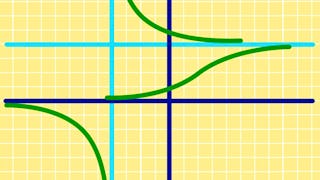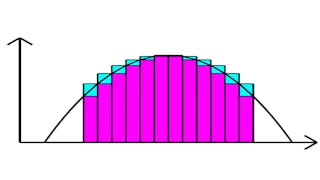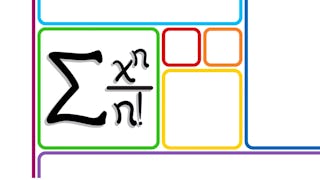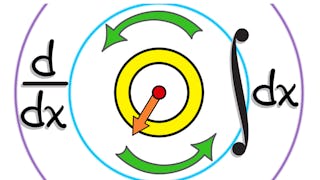L'objectif et les thèmes du cours d'introduction au calcul portent sur les fondements les plus importants des applications des mathématiques dans les domaines de la science, de l'ingénierie et du commerce. Le cours met l'accent sur les idées clés et la motivation historique du calcul, tout en établissant un équilibre entre la théorie et l'application, ce qui permet de maîtriser les concepts clés des mathématiques fondamentales.

Cultivez votre carrière grâce à des programmes dirigés par des experts, des certificats prêts à l'emploi et des moyens d'évoluer sur 10 000 . Le tout pour 25 $US/mois, facturé annuellement. Économisez


Introduction au calcul

Instructeur : David Easdown
Enseignant de premier plan
263 324 déjà inscrits
Inclus avec 
(3,794 avis)
Compétences que vous acquerrez
- Catégorie : Calculs
- Catégorie : Mathématiques
- Catégorie : Théorie et analyse mathématiques
- Catégorie : Résolution de problèmes
- Catégorie : Esprit Critique
- Catégorie : Algèbre linéaire
Détails à connaître

Ajouter à votre profil LinkedIn
56 devoirs
Découvrez comment les employés des entreprises prestigieuses maîtrisent des compétences recherchées


Obtenez un certificat professionnel
Ajoutez cette qualification à votre profil LinkedIn ou à votre CV
Partagez-le sur les réseaux sociaux et dans votre évaluation de performance

Il y a 5 modules dans ce cours
Ce module commence par étudier les différents types de nombres qui se trouvent sur la droite des nombres réels, les développements décimaux et les approximations. Il se poursuit par une exploration de la manipulation des équations et des inéquations, des diagrammes de signes et de l'utilisation du plan cartésien.
Inclus
10 vidéos8 lectures9 devoirs
Ce module introduit la notion de fonction qui saisit précisément la manière dont différentes quantités ou mesures sont liées entre elles. Le module couvre les fonctions quadratiques, cubiques, les puissances générales et les fonctions polynomiales, les fonctions exponentielles et logarithmiques, ainsi que les fonctions trigonométriques liées aux mathématiques du comportement périodique. Nous créons de nouvelles fonctions à l'aide de la composition et de l'inversion et nous examinons comment passer d'une quantité à l'autre de manière algébrique et visuelle à l'aide de transformations dans le plan xy.
Inclus
13 vidéos12 lectures13 devoirs
Ce module introduit les techniques du calcul différentiel. Nous étudions les taux moyens de changement qui deviennent instantanés, lorsque les intervalles de temps deviennent infiniment petits, ce qui conduit à la notion de dérivée. Nous explorons ensuite des techniques impliquant des différentielles qui exploitent les lignes tangentes. Le module introduit la notation de Leibniz et montre comment l'utiliser pour obtenir facilement des informations sur la dérivée d'une fonction et comment l'appliquer.
Inclus
12 vidéos10 lectures11 devoirs
Ce module poursuit le développement du calcul différentiel en introduisant les dérivées première et seconde d'une fonction. Nous utilisons les diagrammes de signes des dérivées première et seconde et, à partir de là, nous développons un protocole systématique pour l'esquisse de courbes. Le module introduit également des règles pour trouver les dérivées de fonctions compliquées construites à partir de fonctions plus simples, en utilisant la règle de la chaîne, la règle du produit et la règle du quotient, et comment exploiter les informations sur la dérivée pour résoudre des problèmes d'optimisation difficiles.
Inclus
14 vidéos13 lectures14 devoirs
Ce cinquième et dernier module introduit le calcul intégral, en étudiant les pentes des lignes tangentes et les aires sous les courbes. Cela conduit au théorème fondamental du calcul. Nous explorons l'utilisation des aires sous les courbes de vitesse pour estimer le déplacement, en utilisant les moyennes des approximations rectangulaires inférieures et supérieures. Nous examinons ensuite les limites des approximations, pour découvrir la formule de l'aire d'un cercle et de l'aire sous une parabole. Nous développons ensuite des méthodes pour capturer précisément les aires sous les courbes, en utilisant les sommes de Riemann et l'intégrale définie. Le module introduit ensuite les intégrales indéfinies et la méthode d'intégration par substitution. Enfin, nous discutons des propriétés des fonctions paires et impaires, liées à la symétrie de rotation et de réflexion, et de la fonction logistique, qui modifie la croissance exponentielle.
Inclus
14 vidéos10 lectures9 devoirs
Instructeur

Offert par
Recommandé si vous êtes intéressé(e) par Mathématiques et logique


The University of Sydney


The Hong Kong University of Science and Technology


University of Pennsylvania


University of Pennsylvania
Pour quelles raisons les étudiants sur Coursera nous choisissent-ils pour leur carrière ?




Avis des étudiants
3 794 avis
- 5 stars
87,19 %
- 4 stars
10,22 %
- 3 stars
1,15 %
- 2 stars
0,57 %
- 1 star
0,84 %
Affichage de 3 sur 3794
Révisé le 6 déc. 2020
I am really very thankful to COUSERA and THE UNIVERSITY OF SYDNEY which give me a lot of learning through the course Introduction to CALCULUS and I am also very thankful to my honorable tutor.
Révisé le 20 juil. 2020
The course is amazing, the teacher is incredible that makes the course be cooler and easier to do it. I enjoyed a lot the experience and certainly will help me to develop my professional career.
Révisé le 29 nov. 2020
This is an amazing course. I loved the way the instructor used classic examples to explain calculus by helping us approach problems from the perspectives of Newton, Leibniz, and the ancient greeks!

Ouvrez de nouvelles portes avec Coursera Plus
Accès illimité à 10,000+ cours de niveau international, projets pratiques et programmes de certification prêts à l'emploi - tous inclus dans votre abonnement.
Faites progresser votre carrière avec un diplôme en ligne
Obtenez un diplôme auprès d’universités de renommée mondiale - 100 % en ligne
Rejoignez plus de 3 400 entreprises mondiales qui ont choisi Coursera pour les affaires
Améliorez les compétences de vos employés pour exceller dans l’économie numérique
Foire Aux Questions
L'accès aux cours et aux devoirs dépend de votre type d'inscription. Si vous suivez un cours en mode audit, vous pourrez consulter gratuitement la plupart des supports de cours. Pour accéder aux devoirs notés et obtenir un certificat, vous devrez acheter l'expérience de certificat, pendant ou après votre audit. Si vous ne voyez pas l'option d'audit :
Il se peut que le cours ne propose pas d'option d'audit. Vous pouvez essayer un essai gratuit ou demander une aide financière.
Le cours peut proposer l'option "Cours complet, pas de certificat" à la place. Cette option vous permet de consulter tous les supports de cours, de soumettre les évaluations requises et d'obtenir une note finale. Cela signifie également que vous ne pourrez pas acheter un certificat d'expérience.
Lorsque vous achetez un certificat, vous avez accès à tous les supports de cours, y compris les devoirs notés. Une fois le cours terminé, votre certificat électronique sera ajouté à votre page de réalisations. Vous pourrez alors l'imprimer ou l'ajouter à votre profil LinkedIn. Si vous souhaitez uniquement lire et visualiser le contenu du cours, vous pouvez l'auditer gratuitement.
Vous pouvez prétendre à un remboursement intégral jusqu'à deux semaines après la date de votre paiement ou (pour les cours qui viennent d'être lancés) jusqu'à deux semaines après le début de la première session du cours, la date la plus tardive étant retenue. Vous ne pouvez pas obtenir de remboursement une fois que vous avez obtenu un certificat de cours, même si vous terminez le cours pendant la période de remboursement de deux semaines. Consultez notre politique de remboursement complète.
Plus de questions
Aide financière disponible,

